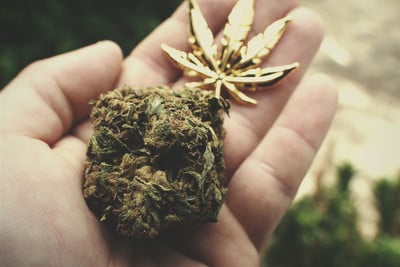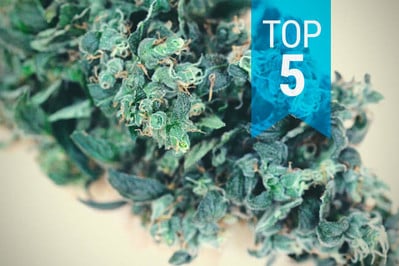
Skateboarding & Cannabis: Explore Their Decades-Long Link
Skating and cannabis are almost inseparable. But does blazing up before a session help or hinder? Smoking weed before a skate certainly comes with some risks, but it can also help to boost creativity and increase the chances of tapping into a flow state. Explore the link between weed and skating below, and whether it's a good idea to pair the two.
Contents:
Cannabis and skateboarding have remained intertwined since their initial union back in the 1950s, maintaining a relationship as tight as trucks on a deck. From their rebellious roots as countercultural movements to their contemporary acceptance in many modern societies, the link between skate culture and weed stands strong.So, let’s kick, push, and coast our way through the fascinating connection between cannabis and skateboarding!
What’s the Link Between Cannabis and Skateboarding?
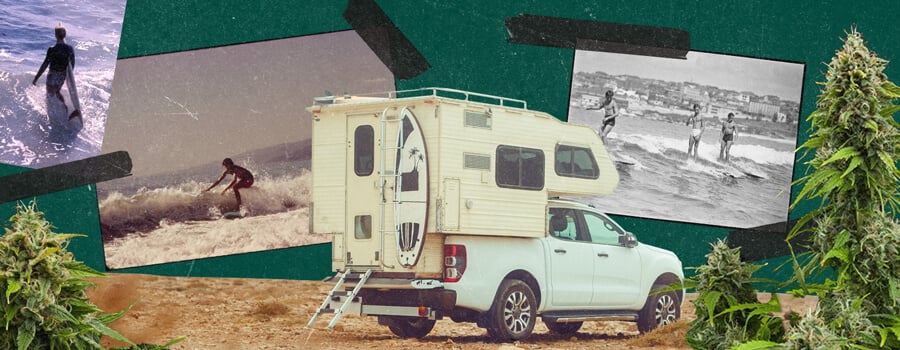
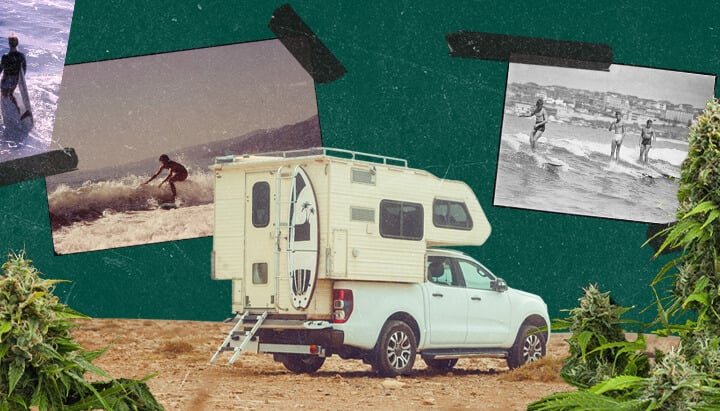
Cannabis and skateboarding have an undeniable bond. Many skaters have a penchant for the herb, and even those who don’t are still associated with it through their sport of choice. But how did skateboarding and weed become so united in the first place? Well, it all has to do with another cannabis-influenced board sport: surfing.
Surfing dates back thousands of years to the ancient Polynesians who crafted and rode wooden boards as part of their seafaring endeavours. However, in its contemporary form, surfing surged in popularity in the 1950s in the United States, following the rise in cannabis use that boomed in the jazz scene of the 1930s and 1940s.
Both cannabis use and surfing emerged as countercultural movements. Surfing embodied freedom, connection to nature, and rejection of the establishment. Likewise, cannabis use became associated with the expansion of consciousness and rebellion against draconian authoritarianism, and fit hand in hand (or foot on board) with the surfer ethos.
With firm historical roots in Hawaii, surfing eventually landed on California shores in the 1950s, where it gained immense popularity with weed-loving locals. It didn’t take long for these thrill-seekers, possibly inspired by their use of the herb, to attach wheels to wooden boards and invent “sidewalk surfing”, the primitive predecessor to modern skateboarding.
Since this historic period in the world of board sports, both the cannabis and skateboarding industries have evolved massively. However, the connection between the two has remained, and even grown stronger in many ways—most noticeably with the advocacy of some of the biggest legends of the sport.
Famous Skaters and Cannabis
A handful of famous skaters have helped to propel the sport to impressive heights over the last few decades. From video games that entire generations enjoyed to the creation of seemingly impossible tricks, skateboarding simply wouldn’t have gained the same traction without these legends. With their roots in a sport so entangled with cannabis culture, it makes perfect sense that some of these boarding titans also had, or have, a relationship with cannabis.
As perhaps the most famous skater on the planet, Tony Hawk rode to fame for several reasons, including landing the first 900 and winning the Vert Skating World Championship over 12 consecutive years. Hawk has been open about his cannabis use, noting that the herb has helped him endure hard times in his life.
Tony Alva, one of the original Z-Boys who helped to revolutionise skateboarding in the 1970s, once said, “A huge segment of the skateboarding population uses marijuana as a herb to better their lives and get in tune with their environment both physically and mentally”. Chad Muska, known for his gnarly pioneering handrail grinds during the late 1990s and early 2000s, has such an affinity for cannabis that his signature shoe line includes trainers that feature a hidden stash pocket.
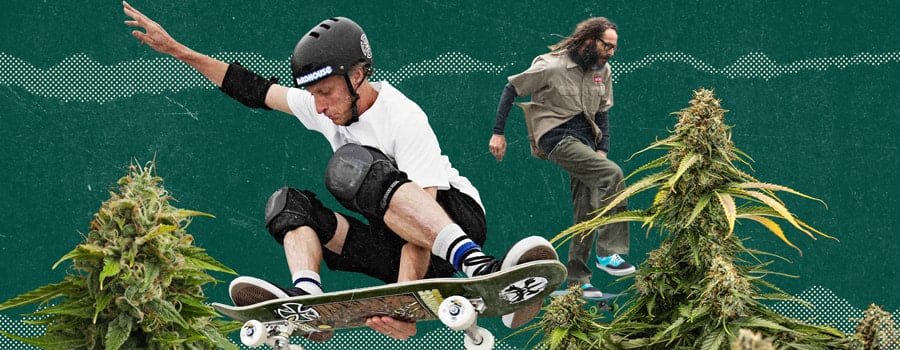
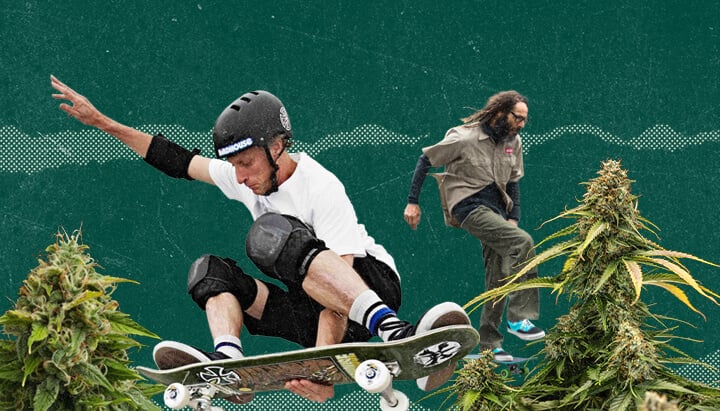
The Risks of Skateboarding High
Skateboarding high might sound like immense fun. However, it also comes with real risks. Before we delve into the potential benefits of pairing boarding with bud, let’s evaluate some of the potential dangers:
- Impaired balance and coordination: Merely skating in a straight line takes considerable balance and coordination, not to mention kickflips and grinds. By affecting the cerebellum and basal ganglia of the brain, THC can cause motor control impairment[1], including slowed arm and leg movement.
- Increased reaction time: Skating safely requires good reaction time. From nailing a landing to managing a bail, good reaction time can help skateboarders pull off tricks while keeping them safe when they don’t go to plan. Research shows that THC has acute effects on reaction time. Even a joint with a THC content of 3.5% slowed reaction times in subjects up to 30 minutes after smoking.
- Decreased risk perception: Cannabis causes a flood of the feel-good chemical dopamine in the brain. Under these conditions, skaters run the risk of misjudging the tricks and jumps they intend to pull off, feeling overly stoked and confident in the moment.
- Legal implications: Skaters are often reprimanded by security and police after skating in places they shouldn't. Possessing weed in these circumstances in regions facing prohibition can heighten the odds of getting busted by law enforcement.
Can Cannabis Consumption Enhance Creativity in Skateboarding?
Skating is an inherently creative sport. Every trick started out as an idea in the mind of a pioneering boarder, and the sport itself arose out of the experimental thinking of a small group of Californian innovators. Whether you’re trying to develop a trick of your own or put together the perfect line, cannabis could give your mind a nudge in the right direction.
Research shows that the herb has mixed effects on divergent thinking—the type of thinking that involves coming up with multiple ideas or solutions to a problem at one time. While high doses of THC (22 mg) appear to negatively impact divergent thinking, low doses (5 mg) appear to enhance performance on tests for divergent thinking.
So, with an adequate amount of THC in your system, you could find yourself becoming more aware of the potential of your skating environment and how to best tackle it. You’ll likely also feel more focused, creative, and dialled in.
What Are the Practical Uses for Cannabis in Skateboarding?
You’re now aware of the intimate link between skating and cannabis. We’ve also gone over the potential downsides of blazing before going for a skate. However, many skaters smoke up almost every time they grab their board and find it helps rather than hinders. With safety in mind, let’s take a look at the practical uses of cannabis in the context of skating, both for performance and recovery.
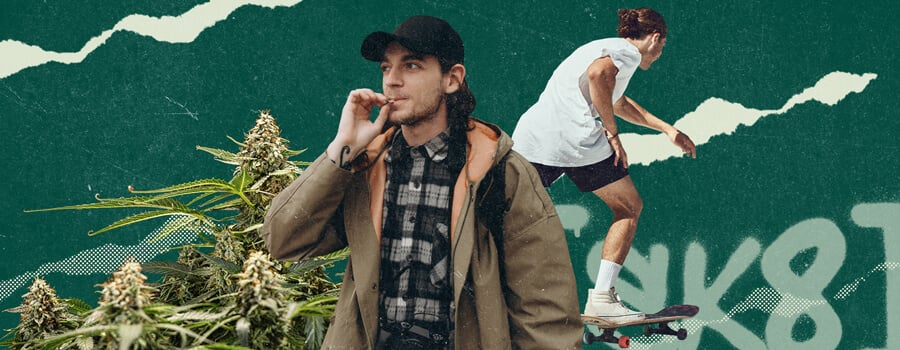
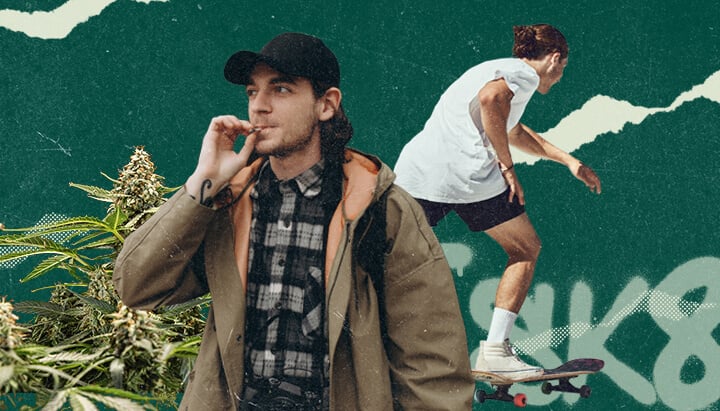
-
Before Skating
Creativity aside, smoking or vaping cannabis before skating helps a lot of boarders feel less agitated. By reducing nervousness, it helps them feel more connected to their board and ruminate less about falling off or bailing poorly. This inevitably unlocks a flow state that keeps them completely engaged with their experience, often resulting in enhanced performance.
But not all skaters opt for strains high in THC. Selecting a variety high in CBD with only trace levels of THC can help to increase focus and relaxation without exerting an intoxicating effect. You’ll experience some of the benefits of cannabis without the slowed reaction time and impaired motor control.
-
After Skating
Cannabis has various uses after a skating session. First and foremost, it’s an excellent way to unwind with your friends. Grab some snacks, review your footage, and reflect on the day! Second, many athletes opt to use cannabis as a recovery tool. While the research remains limited, anecdotal accounts attest to both THC and CBD's efficacy in reducing physical tension, assisting sleep, and simply helping people to relax after a tough bout of physical exertion.
Cannabis and Skateboarding: What Does the Future Hold?
Skateboarding has come a long way in the last 70 years. What started as the obscure invention by a group of eccentric Cali surfers has evolved into a worldwide industry and a sport that now has a place at the Olympic games. As both the skating and cannabis world continue to evolve, you can expect to see this relationship flourish further. More cannabis-themed skate sponsorships and strains marketed towards skaters are likely on the horizon! Plus, we can cross our fingers for further studies on cannabis and sports performance and recovery, hopefully with a specific emphasis on skateboarding as the sport continues to evolve.
- High-Potency Marijuana Impairs Executive Function and Inhibitory Motor Control | Neuropsychopharmacology https://www.nature.com


























